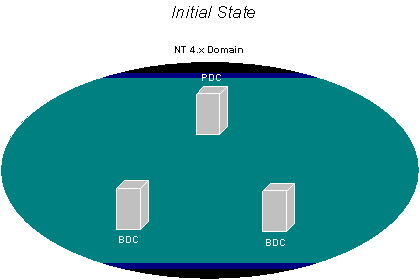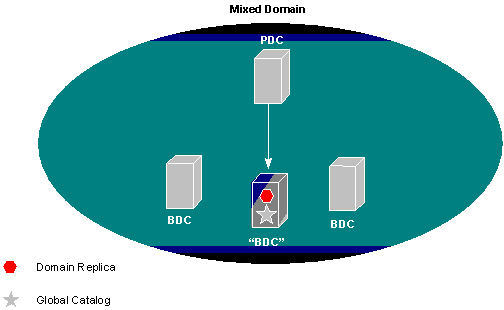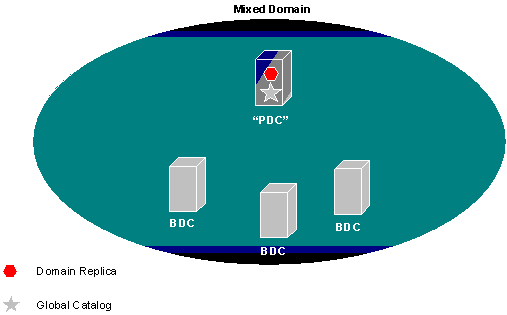
In this example, we will assume we have a Windows NT Domain with 3 domain controllers: one Primary Domain Controller and two Backup Domain Controllers (BCDs).

To begin the migration, we will install a new Domain Controller running next generation Windows NT and configure it to emulate a Windows NT 4.x Backup Domain Controller. Another option would be simply to upgrade one of the existing BDCs to next generation Windows NT, but for the purposes of this example we are taking the most conservative approach.

The new "BDC" receives a replicated copy of the Domain directory from the PDC. When we are confident of the stability of next generation Windows NT Domain Controller running in BDC emulation, we can promote it to be the Primary Domain Controller (PDC) for the domain.

By promoting next generation Windows NT Domain Controller to PDC we have made next generation Windows NT Directory Services the "master" copy of the domain directory. At this time we can begin performing all of the account maintenance in the domain using Next generation Windows NT graphical tools. The Windows NT 3.5x and 4.0 BDC's and the client systems in the domain are unaware of this change and continue to operate normally.
Finally, we can upgrade each BDC to next generation Windows NT. When each BDC is converted, it becomes a peer of the PDC. Windows NT 4.0 replication is replaced by the multimaster next generation
Windows NT replication.

When all remaining BDCs have been upgraded, the "mixed" domain has become a "pure" next generation domain and can be joined into a domain tree. Down-level client systems will continue to see the domain as a Windows NT 3.5x or 4.0 domain. Next generation clients will see the domain as a next generation domain and will be able to make full use of next generation Windows NT Directory Services capabilities.